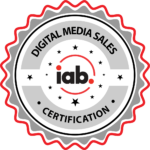In the rapidly evolving digital marketing landscape, display ads have emerged as a cornerstone strategy for businesses aiming to boost visibility and engagement.
These versatile advertisements, seamlessly blending visuals and text, offer a direct gateway to a brand’s digital presence, enticing potential customers with a glimpse of what they have to offer.
From the banner ads that frame our web experiences to the targeted campaigns that populate our social feeds, display ads are an integral part of the tapestry of modern online interaction.
Understanding the nuances of display advertising is crucial for businesses looking to carve out their place in the digital world. These ads are not just about showcasing products or services; they are a sophisticated tool for brand storytelling, audience engagement, and strategic market positioning. With their ability to adapt to various formats and platforms, display ads offer a unique opportunity for businesses to connect with their audiences in a deeply personalized and impactful way.
What are Display Ads?
Display ads are a pivotal component of digital marketing.
They are a type of online advertisement combining text, images, and a URL that links to a website where customers can learn more or buy products. These ads vary in format, including static images or rich media ads with video or changing text. They aim to educate about a product or engage audiences with interactive elements like games or puzzles.
Banner ads, a common form of display ads, are often used for awareness campaigns.
Types of Display Advertising
Display advertising appears on third-party websites using video, image, or text elements to market products or services.
They come in various forms, such as banner ads, desktop and mobile leaderboard ads, and are usually rectangular or square in shape. The content often aligns with the host website and audience preferences.
Display advertising campaigns can run through networks like Facebook or Google Ads, offering powerful audience-targeting features and a combination of advertising formats.
Targeting Options in Display Ads
The key to the success of display ads lies in their ability to target specific audiences with precision and relevance.
This targeting capability sets display advertising apart in digital marketing, allowing businesses to direct their message to the right people at the right time.
Let’s take a look:
- Remarketing Ads: These are widely used due to ad personalization trends. They target consumers based on demographics and online interests, often showing personalized product recommendations based on a user’s website interactions.
- Affinity Targeting: Targets consumers with an active interest in your market, like “car enthusiasts” or “movie lovers.”
- Custom Intent and In-Market Ads: Focus on consumers actively searching for products or services similar to yours.
- Similar Audience Ads: Target individuals with interests or characteristics common with your current visitors.
- Contextually Targeted Ads: Placed on websites based on criteria like ad topic, keywords, language, location preferences, and the host website’s theme.
- Website Placement Targeting: Allows you to hand-pick websites to host your ad, with options to combine with contextual targeting.
Comparing Display Ads and Native Ads
Native ads blend in with other content on a page, especially common in social media news feeds, and display the word “sponsored” to minimize deception.
They are less obvious than display ads and can sometimes reach users with ad-blocking software. However, there’s a risk of viewers feeling tricked upon realizing they’ve engaged with an ad.
Advantages and Challenges of Display Ads
While display ads are a vital tool in the digital marketing tool kit, they come with their own set of pros and cons.
Here are the advantages and challenges of display ads.
Advantages
- Enhanced Brand Awareness: Display ads are clearly advertisements, helping audiences immediately recognize your brand’s message.
- Quick Message Conveyance: They are visually based, quickly delivering your brand message without needing extensive reading.
- Ease of Creation and Placement: Display ads are simple to create and can be placed on almost any site in the ad network without much technical expertise.
- Funnel Stage Targeting: They can reach your target audience at any decision-making stage with proper targeting knowledge.
- Cost-Effectiveness: Display ads have a broad reach and are less obtrusive than traditional advertising, offering great value for money.
- Real-Time Analytics: Display ads can be tracked in real-time to help you optimize your campaigns for better performance over time.
Challenges
- Ad Dislike: Many consumers find ads intrusive, leading to increased use of ad-blocking software.
- Minimal Content: Their short length can sometimes be too minimal, leading to a need for supplementary long-form content.
- Lower Click-Through and Conversion Rates: They often have lower click-through rates than other online advertising forms, affecting conversions.
- Competition: The display advertising landscape is competitive, requiring marketers to stand out by creating engaging ads that will make them click your ad over your competition.
Measuring Effectiveness
To assess the effectiveness of display ads, key metrics include impressions, reach, cost, click-through rate (CTR), and conversion rate.
Tracking these metrics throughout the campaign for resource allocation and adjustment is crucial.
Designing Effective Display Ads
Crafting an effective display ad is an art that balances creativity with strategic thinking.
The design of your display ad not only reflects your brand identity but also influences how your audience interacts with your message. A well-designed ad must respect the user experience, avoiding elements that can be perceived as intrusive or annoying.
Here are the key elements to keep in mind:
- Respectful Design: Avoid intrusive elements like autoplay video ads or pop-ups. Opt for static ads placed strategically on the screen.
- Simplicity: Keep the design simple and concise, focusing on essential details without overwhelming users.
- Quality Focus: Ensure high-resolution images, clear typography, and a bold logo.
- Strong Call to Action (CTA): Craft a compelling CTA to encourage users to click through to your website or a specific product page.
Adding Display Advertising to Your Marketing Plan
Display advertising is an efficient and honest digital marketing option.
It’s visually engaging and spreads your brand’s message without intrusion. When combined with other marketing techniques, it effectively reaches potential customers at various stages of their journey.
If you’d like to learn more about how display product ads can fit into your marketing strategy, just fill out the form below.























